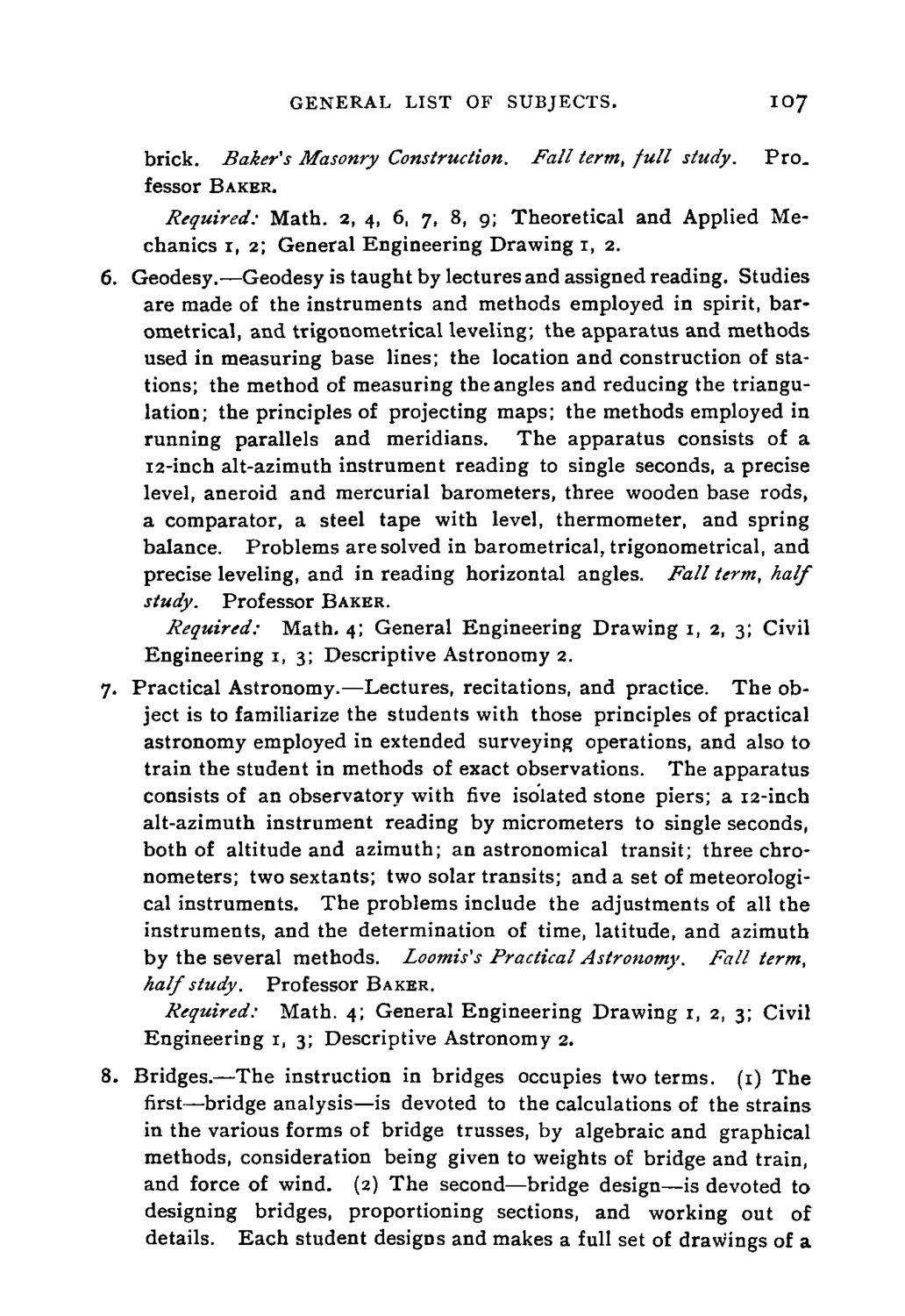| |
| |
Caption: Course Catalog - 1893-1894
This is a reduced-resolution page image for fast online browsing.

EXTRACTED TEXT FROM PAGE:
GENERAL LIST OF SUBJECTS. I07 brick. Baker's Masonry Construction. Fall term, full study. Pro. fessor BAKER. Required: Math. 2, 4, 6, 7, 8, 9; Theoretical and Applied Mechanics 1, 2; General Engineering Drawing 1, 2. 6. Geodesy.—Geodesy is taught by lectures and assigned reading. Studies are made of the instruments and methods employed in spirit, barometrical, and trigonometrical leveling; the apparatus and methods used in measuring base lines; the location and construction of stations; the method of measuring the angles and reducing the triangulation; the principles of projecting maps; the methods employed in running parallels and meridians. The apparatus consists of a 12-inch alt-azimuth instrument reading to single seconds, a precise level, aneroid and mercurial barometers, three wooden base rods, a comparator, a steel tape with level, thermometer, and spring balance. Problems are solved in barometrical, trigonometrical, and precise leveling, and in reading horizontal angles. Fall term, half study. Professor BAKER. Required: Math. 4; General Engineering Drawing 1, 2, 3; Civil Engineering 1, 3; Descriptive Astronomy 2. 7. Practical Astronomy.—Lectures, recitations, and practice. The object is to familiarize the students with those principles of practical astronomy employed in extended surveying operations, and also to train the student in methods of exact observations. The apparatus consists of an observatory with five isolated stone piers; a 12-inch alt-azimuth instrument reading by micrometers to single seconds, both of altitude and azimuth; an astronomical transit; three chronometers; two sextants; two solar transits; and a set of meteorological instruments. The problems include the adjustments of all the instruments, and the determination of time, latitude, and azimuth by the several methods. Loomis's Practical Astronomy. Fall term, half study. Professor BAKER. Required: Math. 4; General Engineering Drawing i, 2, 3; Civil Engineering i, 3; Descriptive Astronomy 2. 8. Bridges.—The instruction in bridges occupies two terms. (1) The first—bridge analysis—is devoted to the calculations of the strains in the various forms of bridge trusses, by algebraic and graphical methods, consideration being given to weights of bridge and train, and force of wind. (2) The second—bridge design—is devoted to designing bridges, proportioning sections, and working out of details. Each student designs and makes a full set of drawings of a
| |